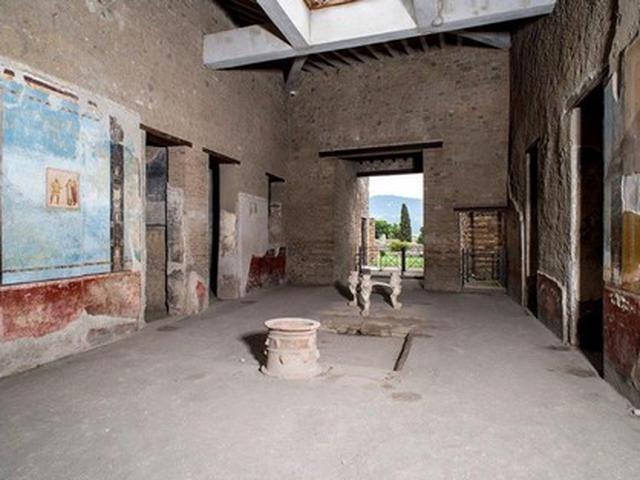Casa de Casca Longus or Theatrical Pictures

The Casa di P. Casca Longus, also known as the Casa de Casca Longus or Theatrical Pictures, is a fascinating archaeological site located in the ancient city of Pompeii. This historical complex consists of two separate houses that date back to the 2nd century BC, with one serving as the primary atrium and the other as the secondary atrium. The name of the house, Casa di P. Casca Longus, was derived from an inscription found on marble table legs in Garden I of the House. However, it is important to note that the association of this house with P. Casca Longus is considered unfounded by experts.
Despite the lack of skeletal remains found within the premises, it is believed that the occupants of the Casa di P. Casca Longus managed to escape before the devastating eruption that buried Pompeii. The absence of material in the kitchen and the minimal activity in the back of the house suggest that it may have been only partially functional at the time of the eruption. The excavations have revealed interesting insights into the interior design of the house, with evidence of different decorating styles present in various rooms.
The interior design of the Casa di P. Casca Longus has been a subject of debate among archaeologists. Initially, it was believed that the house was being decorated in the Fourth Style when the eruption occurred. However, further analysis suggested that the decoration was actually in the Third Style, and that an earthquake in 62 AD had damaged the structure and decoration. This change in interpretation sheds light on the history of the house and the events that led to its abandonment.
One of the most intriguing features of the Casa di P. Casca Longus is the presence of theatrical pictures in some of the rooms. These paintings depict scenes from ancient Roman theater, showcasing the artistic and cultural interests of the inhabitants. The detailed and vibrant frescoes provide a glimpse into the daily life and entertainment of the residents of Pompeii, offering a unique perspective on the ancient city's rich history.
Visitors to the Casa di P. Casca Longus can explore the well-preserved ruins of the house and admire the intricate details of the theatrical pictures that adorn the walls. The site offers a fascinating glimpse into the lives of the ancient Pompeiians and provides valuable insights into the art and culture of the time. Whether you are a history enthusiast or simply curious about the past, a visit to the Casa di P. Casca Longus is sure to be a memorable and educational experience.
© ChatGPT 3.5